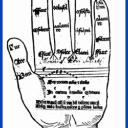Yahoo Answers is shutting down on 4 May 2021 (Eastern Time) and the Yahoo Answers website is now in read-only mode. There will be no changes to other Yahoo properties or services, or your Yahoo account. You can find more information about the Yahoo Answers shutdown and how to download your data on this help page.
How to correctly play recorder notes?
My children are learning to play recorder and one issue that has come up has been how to play the notes. I was taught to only use your tongue on staccato notes; the resources we have say to have your tongue go "t, t" or "do, do" as you play--even all the normal notes.
Is there an actual proper way? Those who play professionally, which method are they most likely to use? Any links for more information?
6 Answers
- MUDDLv 71 decade agoFavourite answer
The resource I send most people to, Dolmetsch.com, has a wealth of information about recorder and I have put several links below. As far as tounging, I teach my students to start with the syllable "Toooo" or "Tu" although for some notes that are easy to overblow (creating that extremely annoying "EEEEKK" sound) I sometime fall back on the syllable "Du."
(once they get the note succsesfully however, we move back to "Tu")
To get to the second range, we sometime use the syllable "Tee" and for really fast repeated notes, we use "Katta, Katta, Katta, Katta" (for the upper range Kitty Kitty Kitty Kitty)
Best of luck and I hope this is of some use to you. I also included a link to Rockin' Recorders just in case you need some new songs to play. It is a really fun site for students, as well as teachers. You can download my pages at http://www.sheetmusicdigital.com/ for free if you become a member. If there is something that interests you, give me a shout and I can always send you a PDF file.
Source(s): http://www.dolmetsch.com/index.htm Tounging http://www.dolmetsch.com/dlesson1.htm#totongue Slurring http://www.dolmetsch.com/dlesson2.htm#toslur First things first http://www.dolmetsch.com/lesson0.htm http://studiokay.com/recorder/Homex.html - CWRUlibrarianLv 51 decade ago
On a recorder, every non-slurred note should begin, as a default, with a "d" tonguing ("Do" for the lowest notes, "Di" for the highest). I'd save "t" for accented notes; it can be pretty rough-sounding. Historically, there are many sophisticated tonguing patterns that were used...diri, diddle...and these are all employed by professionals. Note that this is all about the initial attack and has nothing to do with staccato (which is about the end of the note). While one can play fairly short without stopping the air with the tongue, stacco is played by returning the tongue to the back of the teeth, thus stopping the air flow.
- MamiankaLv 71 decade ago
All notes should be played with a gentle yet clear articulation., unless they are part of a slurred pattern, Then the intital note is tongued - the others are smoothly connected in the slur.
Source(s): Professional woodwind player, certified teacher since 1971, and competition judge in NY. - Anonymous5 years ago
notes on christmas songs
- Anonymous1 decade ago
yes



